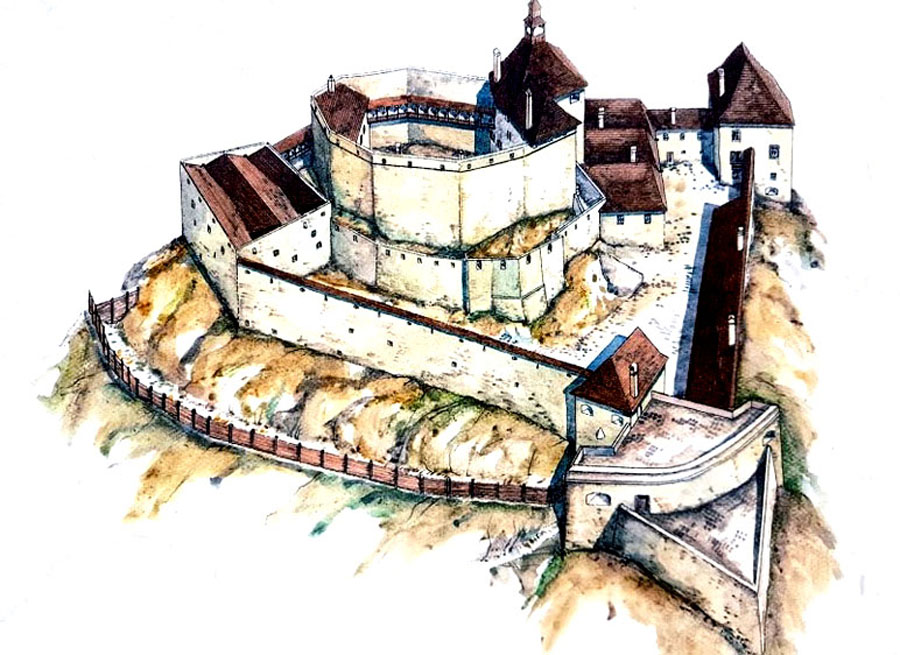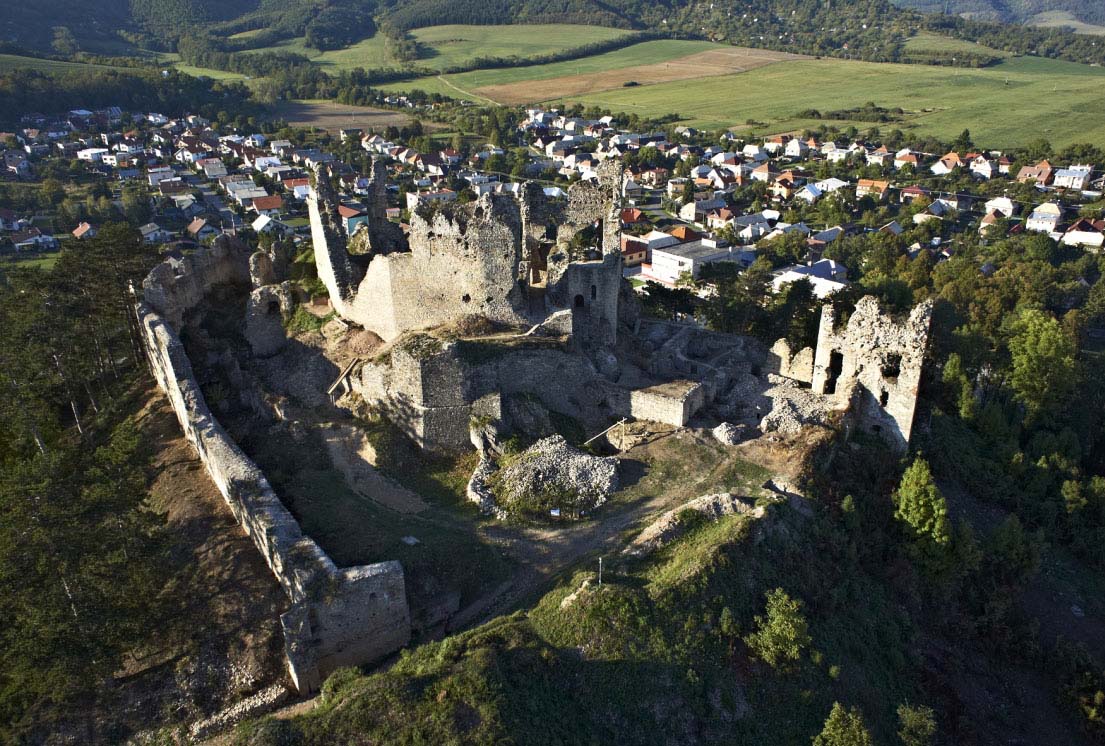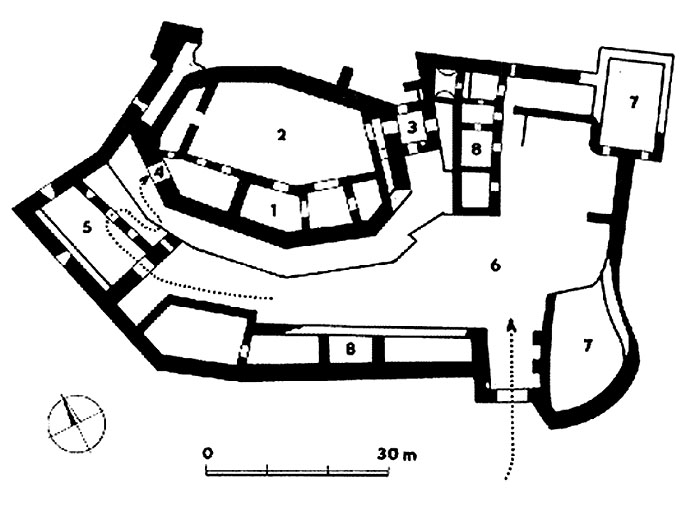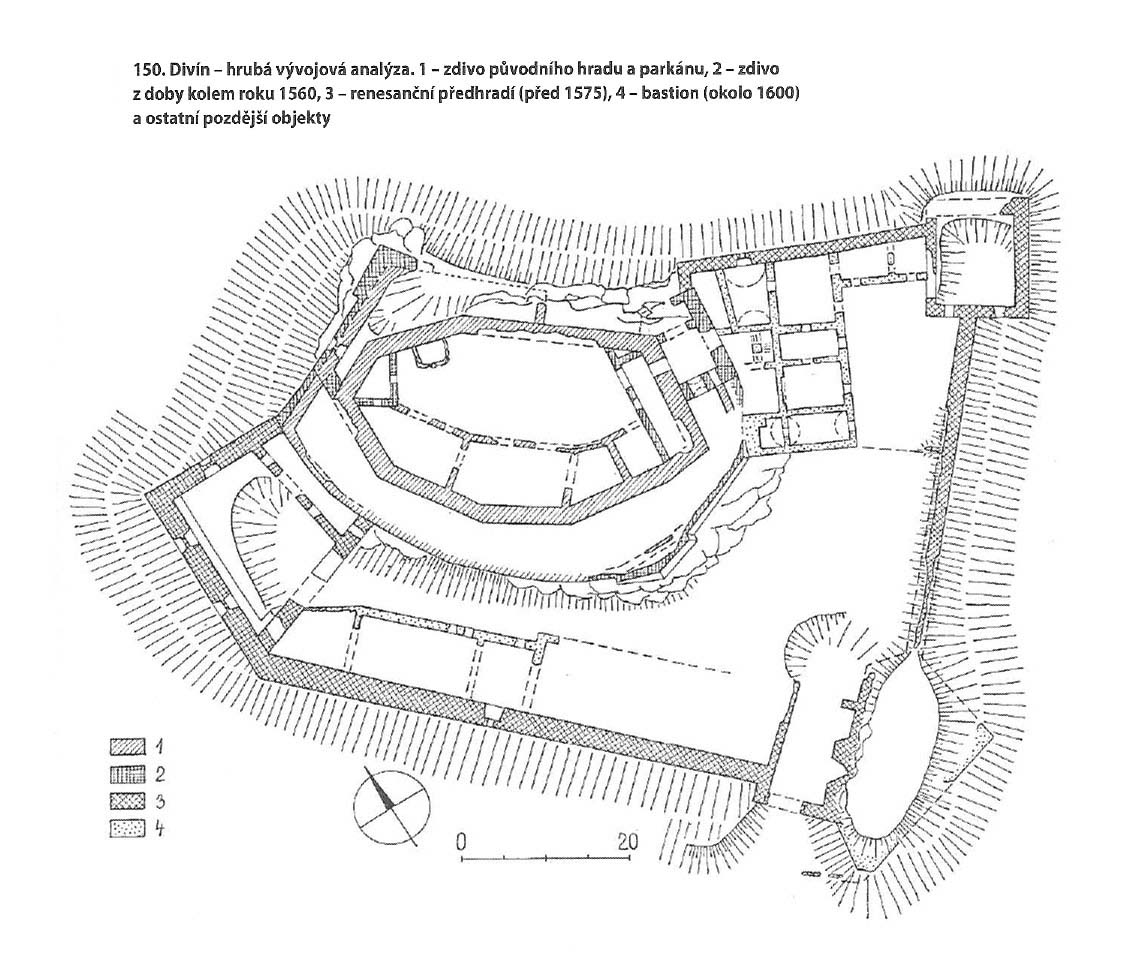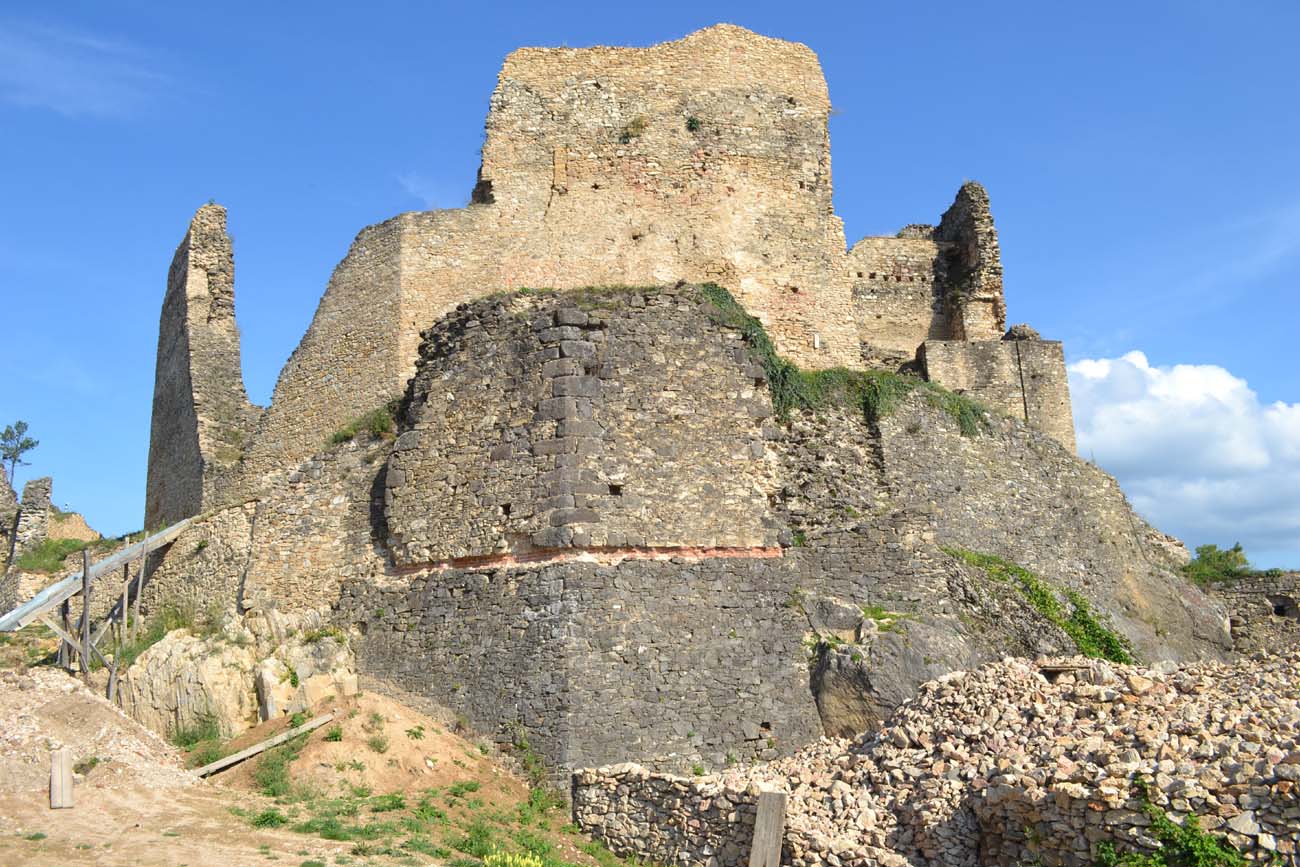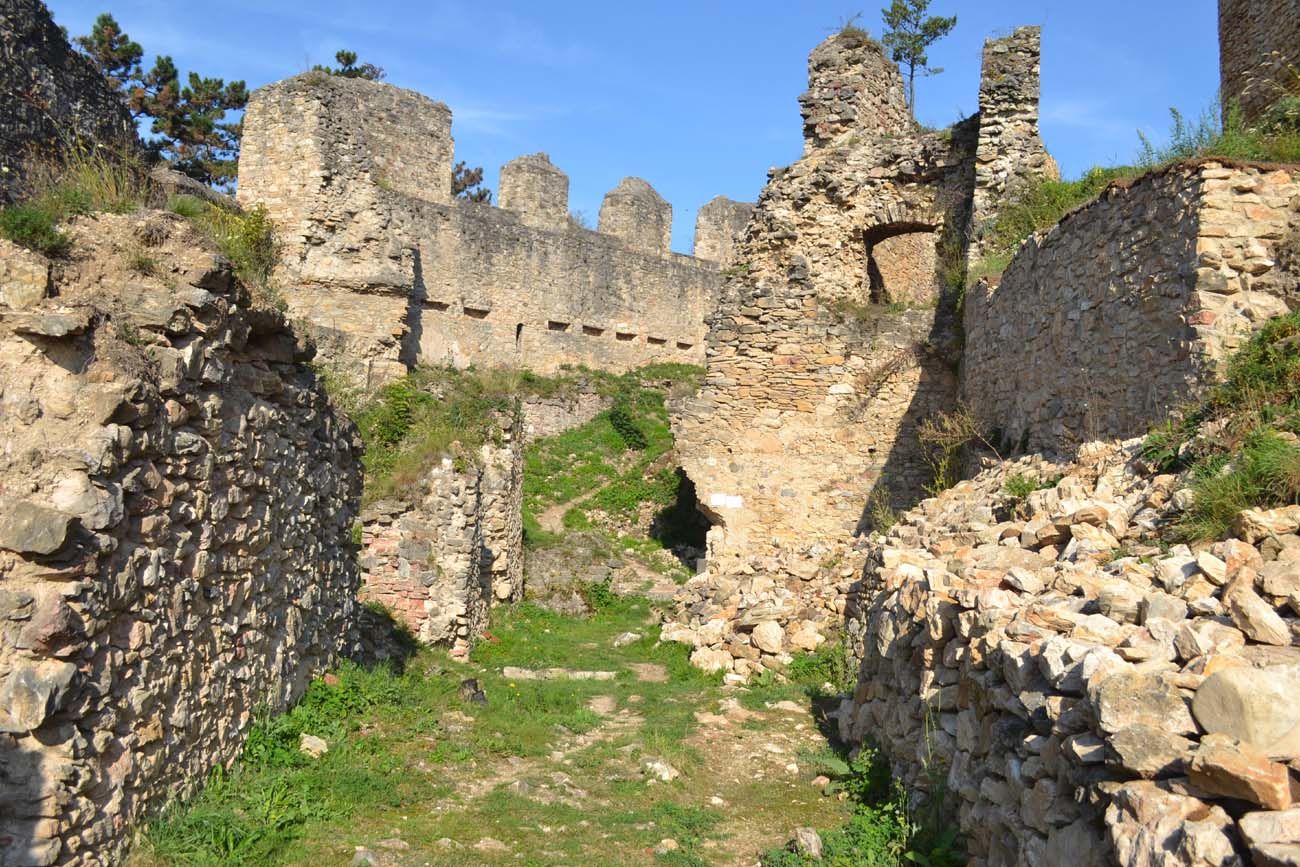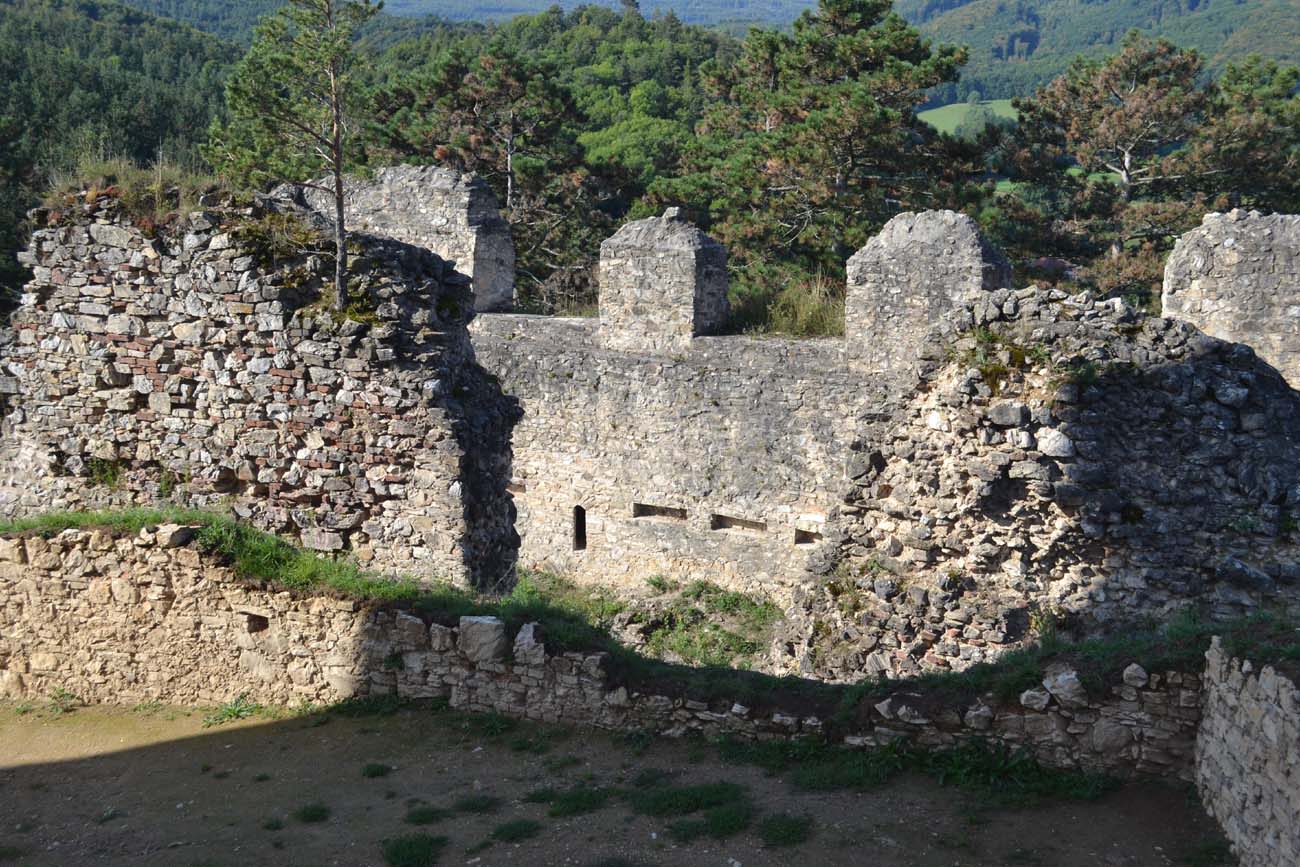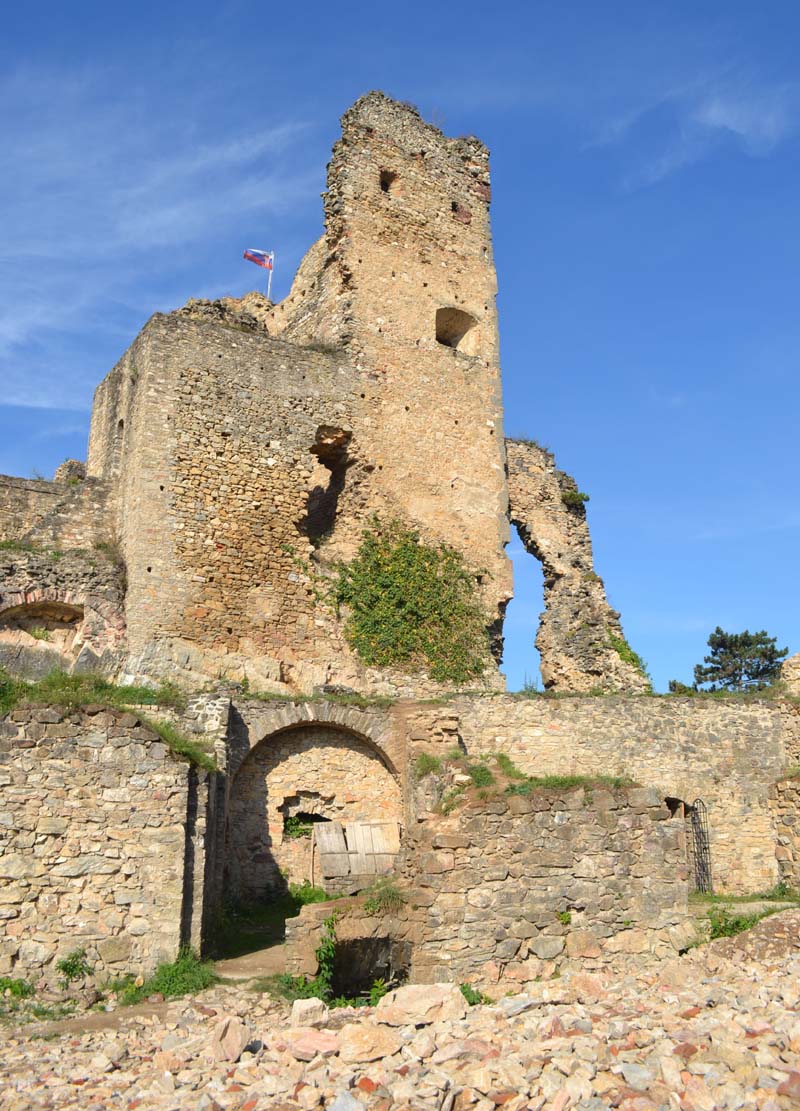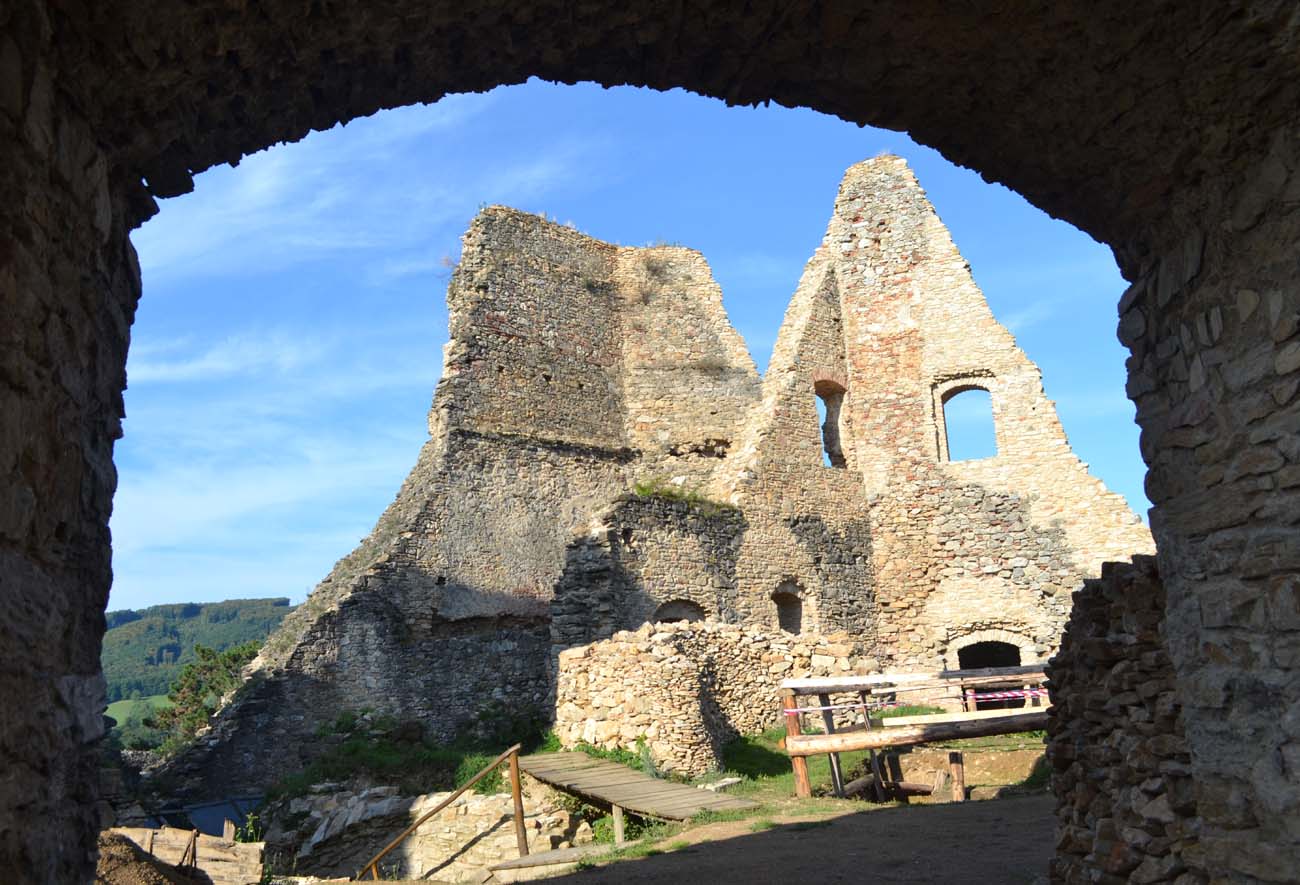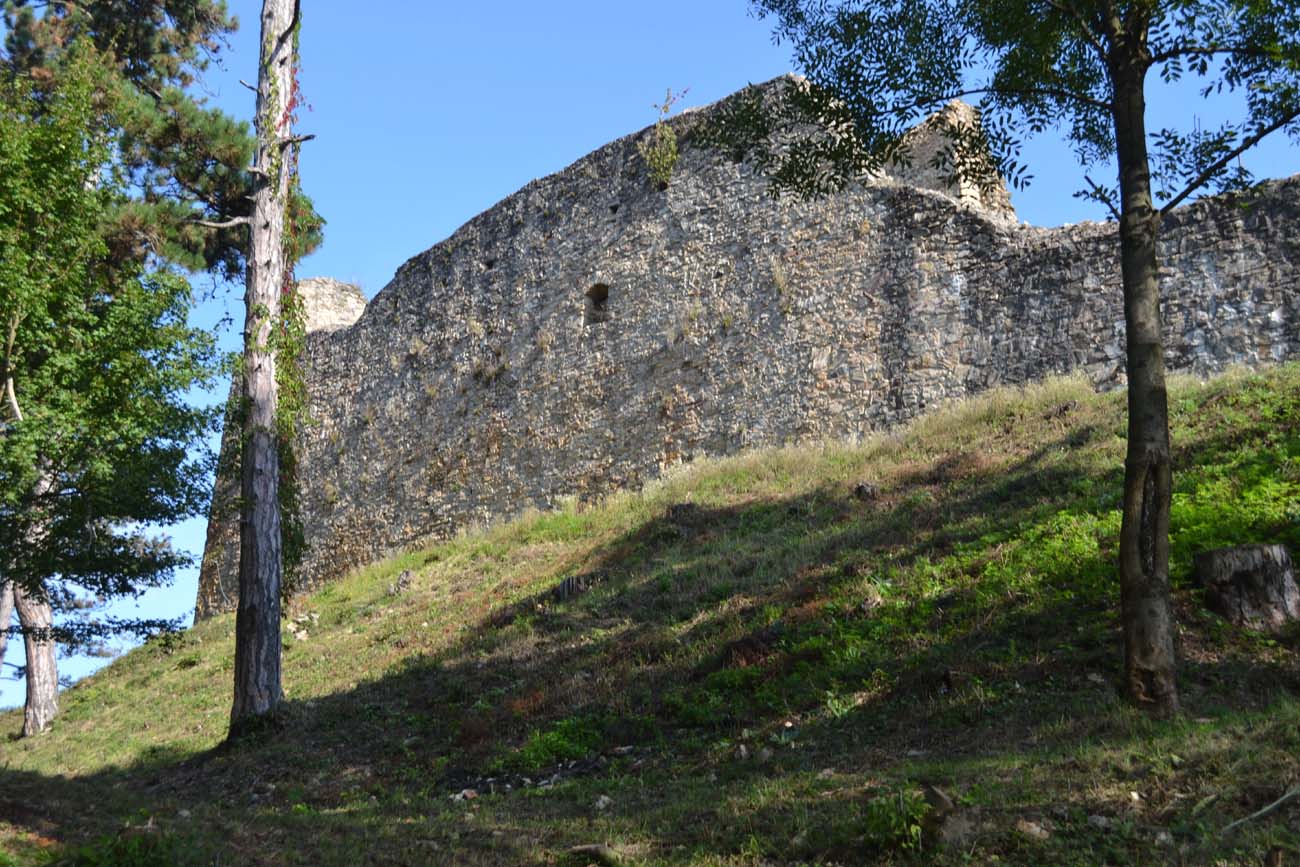History
The castle was built at the end of the 13th or early 14th century. At first it belonged to the Tomaj and Lossonczy families, which gradually expanded it. Divín was mentioned for the first time in written sources in 1329, eight years after the death of the rebellious magnate Matthew III Csák, who also seized Divín for some time. After the rebellion of nobles in 1469, castle came under the control of King Matthias Corvinus, who gave it to Michael Orszagh. Soon, however, it switched to Jan Nádasda Ongor, and after the death of his daughter Catherine, Sigismund Balassa seized Divín by force.
The castle played an important role in the system of defense of Central Slovak cities against the Turks, especially in the 16th century. After the capture of Fiľakovo by the Turks in 1554, it was expanded and fortified. Despite new fortifications, it was captured by the Turks in 1575. They have made Divín a base for plundering raids to the surrounding areas. The castle returned to the Balass family after a successful siege in 1593.
In the second half of the 17th century, the owner of Divín was Imrich Balassa, who was infamous for his attacks and plunder of the surrounding villages. To bring him to court in 1666, the castle was besieged by the Palatine Wesselényi’s army. Seeing no chance for effective defense, the garrison of the castle handed Imrich, but he soon thanks to familiarity and bribes was released and settled in the estate under the castle. What’s more, he defeated the imperial garrison and took his main seat again. In 1674, there was another, six-week siege, and the next after only five years, which this time finally ended in the capture and destruction of the castle. It was later handed over to the Zichy family, but it was never rebuilt again.
Architecture
The castle was located on a low hill south of the Divín settlement. The oldest part of the stronghold had the shape of a curved oval measuring 44 by 25 meters. The thickness of the perimeter defensive walls was up to 2 meters. Residential buildings with four rooms on the ground level were attached to the inner face of the southern part of the defensive wall. The eastern part of the buildings had cellars cut into the rock. The demand for water was provided by a rock cut tank in the northern part of the courtyard, while the entrance gate was located in the eastern part. Due to the slope of the terrain, it was accessible trough a wooden ramp. The castle in its oldest form was typical for Moravia, but also for Silesia and Slovakia, a towerless structure whose defense was based on a strong perimeter wall.
The second stage of medieval expansion was the construction of the outer perimeter of the defensive wall at the beginning of the 15th century, which repeated the layout of the main ring of fortifications. An entry road led by zwinger created in this way, from the west gate to the main gate in the east. The latter during the late Gothic or Renaissance rebuilding was preceded by a gatehouse, entirely extended beyond the perimeter of the main walls and connected to the new range on the courtyard side.
The area east and south of the castle was used from the beginning of its construction for the economic buildings of the outer ward. Its fortifications for a long time were a light wood-earth structure, replaced by a massive stone wall (3 meters thick) only during the 16th century expansion. During the works, three buildings were erected in the outer bailey: a quadrangular building in the eastern corner of a form similar to the tower, a gatehouse on the south side and a large northern building that filled the corner at the entrance from the outer bailey to zwinger area.
Current state
The castle has been preserved in the form of a ruin. In the best condition has survived the upper castle residential building, whose fragments of the walls reach 11 meters and together with the tower give the castle a distinctive look. The castle is open to visitors.
bibliography:
Bóna M., Plaček M., Encyklopedie slovenských hradů, Praha 2007.
Wasielewski A., Zamki i zamczyska Słowacji, Białystok 2008.

